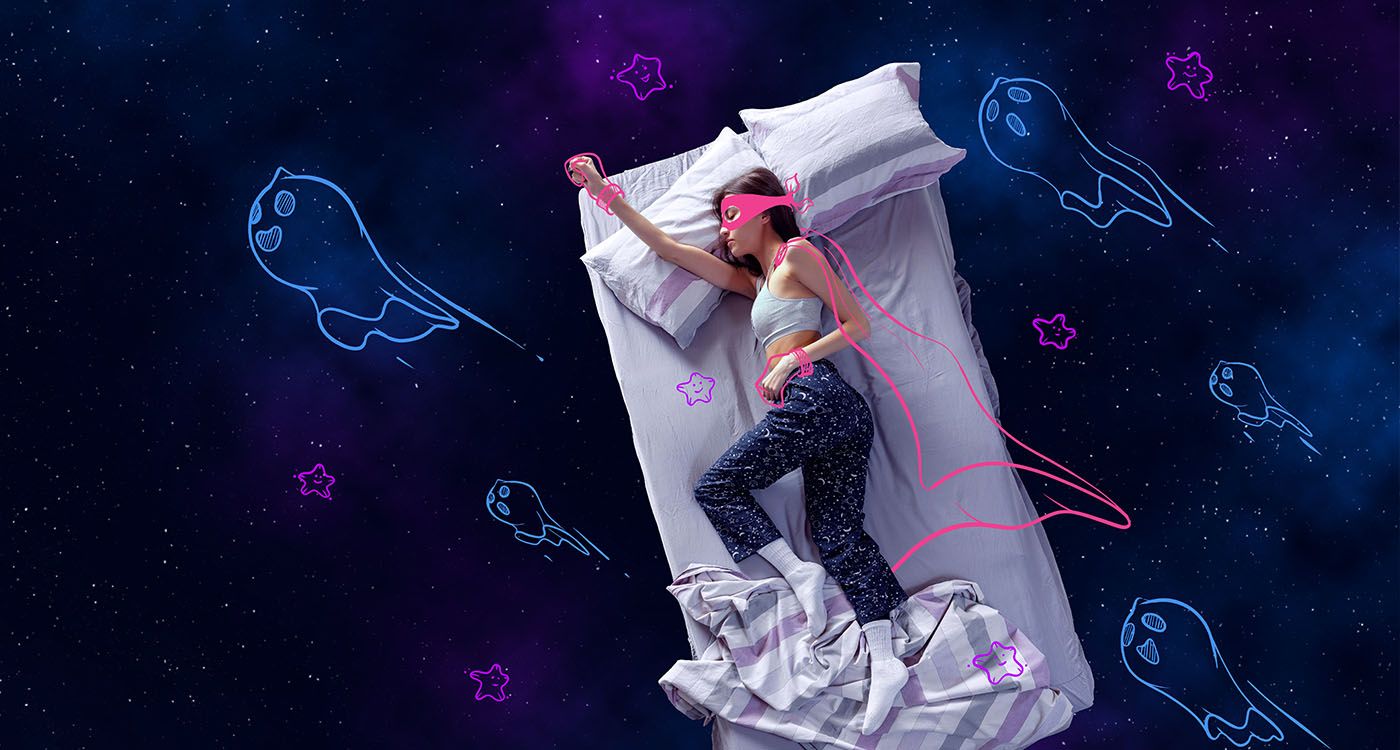
Japanese researchers are developing an AI capable of capturing images from our dreams and visually reconstructing them with around 60% accuracy. This breakthrough blends science, the unconscious mind, and the future of human consciousness in a fascinating way.
Sleep, dream… and soon, wake up and watch your dreams like a movie? While it may still sound like science fiction, this technology is taking shape in research labs. At Kyoto’s ATR Computational Neuroscience Laboratories, neuroscientist Yukiyasu Kamitani and his team have created an AI system that decodes brain activity during REM sleep—the stage when dreams are most vivid—and reconstructs the dream images visually.
The process involves a headset combining functional MRI brain imaging with machine learning. As the subject sleeps, researchers monitor activity in the brain’s visual regions in real time. When REM sleep is detected, the data is recorded. The sleeper is then gently woken to describe their dream, which is matched to the brain data to build a personalized database. The AI learns to associate specific brain activity patterns with visual elements such as shapes, objects, faces, and environments.
In recent studies, the system achieved roughly 60% accuracy in reconstructing dream visuals. For certain elements like objects, faces, or landscapes, accuracy reached up to 70%. Though these reconstructions resemble blurry, faded memories rather than high-definition videos, they capture the essential structure of the dream—a human figure, a street, a tree, or a face—all generated from brain activity by AI.
The Unconscious in Pixels
This technology, reminiscent of a Philip K. Dick novel, evokes both excitement and profound questions. For the first time, it offers a glimpse into the visual world of our unconscious minds. This could revolutionize mental health, allowing clinicians to analyze dreams objectively and potentially detect early signs of disorders like anxiety, depression, or PTSD. Dreams have always mirrored our mental state symbolically; decoding them scientifically could deepen our understanding of mental health and improve treatments.
Creativity is another frontier. Artists, writers, and designers might one day draw direct inspiration from their dreams, transforming the brain’s nighttime imagery into raw creative material. The unconscious could become a private visual lab—a personal cinema to capture and explore dream fragments. For lucid dreamers, this technology could open near-philosophical possibilities, turning sleep into a conscious, navigable realm.
However, the technology remains complex and highly personalized. Each AI system must be trained on an individual’s brain, requiring multiple nights of functional MRI data and dream reports. The results are statistical correlations rather than perfect replays. We’re still far from watching a full, vivid “Inception” inside our heads.
At the Edge of the Mind
Despite its limitations, this research marks a major breakthrough in consciousness studies. Dreams, long shrouded in mystery and symbolism, can now be explored visually—not by reducing their meaning, but by bridging brain science and the depths of the soul.
Similar projects are underway worldwide. In China, Baidu has patented a system that analyzes animal vocalizations and physiological signals during sleep. Other researchers use EEG, eye movements, and heart rhythms to decode dream fragments. The DreamDiffusion project on arXiv combines verbal dream descriptions with generative AI to create richer images fueled by both narrative and brain data.
All experts agree: visualizing dreams is a tool, never absolute proof. Dreams are intimate, fleeting experiences, and any capture risks distortion or oversimplification. AI offers a reflection—one that will never fully embody the dream itself.
While consumer versions remain years away, this breakthrough has already placed dreams back at the forefront of scientific and philosophical inquiry.




Comments